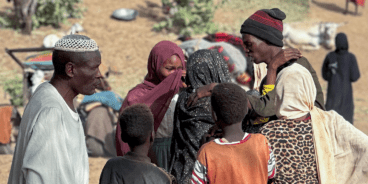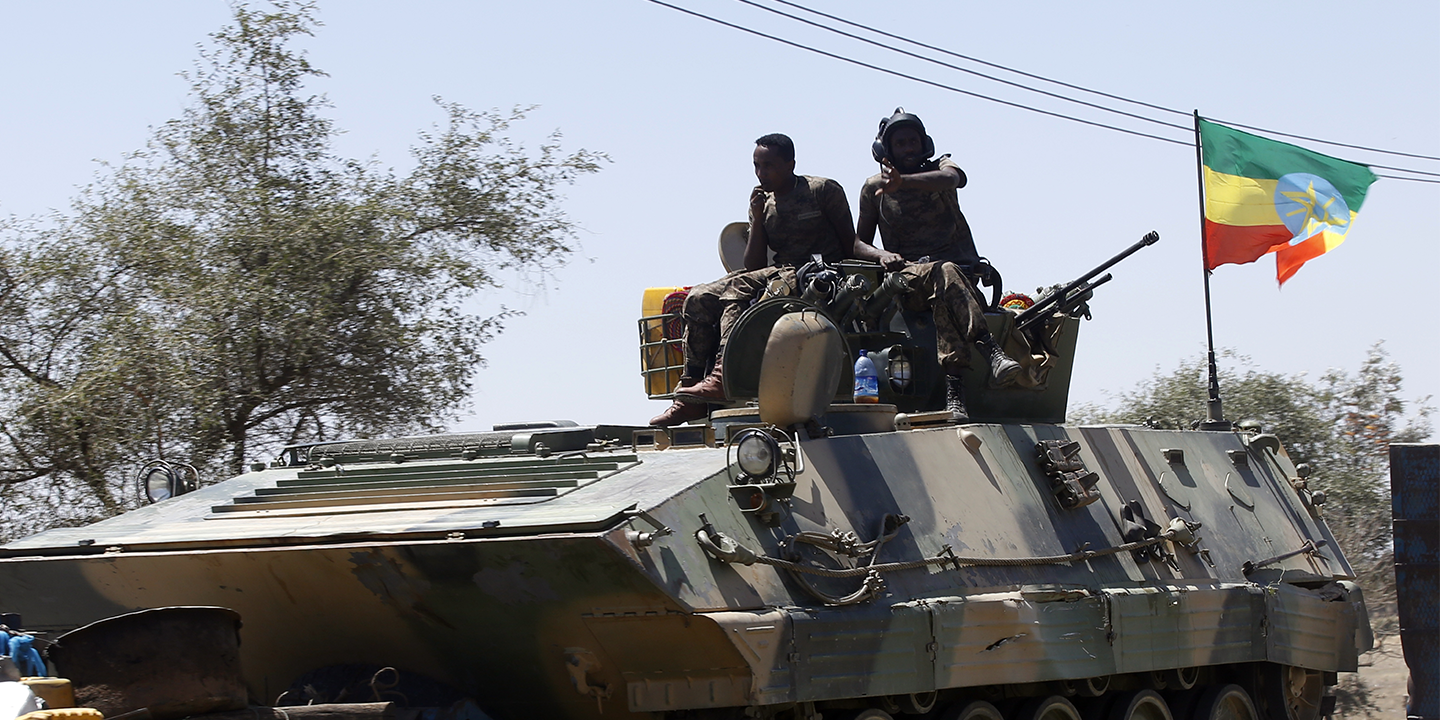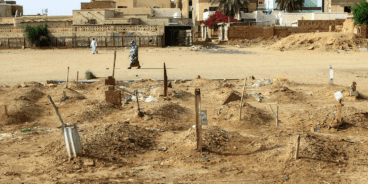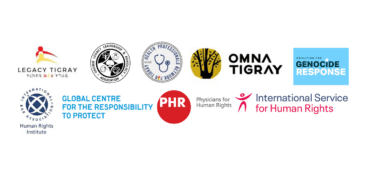

Atrocity Alert No. 250: Ethiopia, DR Congo and 5 Years of Atrocity Alert
Atrocity Alert is a weekly publication by the Global Centre for the Responsibility to Protect highlighting situations where populations are at risk of, or are enduring, mass atrocity crimes.
AFTER 6 MONTHS OF ATROCITIES, 1.7 MILLION PEOPLE ARE DISPLACED IN TIGRAY, ETHIOPIA
Next Tuesday, 4 May, marks six months since the start of armed conflict between the federal government and the Tigray People’s Liberation Front (TPLF) in the Tigray region of Ethiopia. The conflict has been characterized by widespread atrocities, including killings, rape and sexual violence, targeted attacks on civilians and refugees, the intentional destruction of the region’s food supplies, health facilities and ancient cultural heritage, and the obstruction of humanitarian aid. While these potential crimes against humanity and war crimes have mainly been perpetrated by Ethiopian and Eritrean government forces, the TPLF and its allies have also been responsible for grave human rights violations and abuses.
On 27 April the UN Office for the Coordination of Humanitarian Affairs (OCHA) reported that there are at least 1.7 million internally displaced people (IDPs) across the region, “including half a million new IDPs in Shire alone.” According to OCHA, “Shelter Cluster partners reported a marked increase of new IDP arrivals in major towns, notably Shire, Adwa, Mekelle, and Axum. Displacement site assessments also revealed deplorable living conditions with high risk of health outbreaks, particularly during the coming rainy season.”
Despite the longevity and magnitude of the crisis in Tigray, the UN Security Council (UNSC) only agreed to its first Press Statement on the situation on 22 April. More than 150 days after the conflict began, the Council noted that, “insecurity in Tigray constitutes an impediment to the ongoing humanitarian operations and called for a restoration of normalcy.” The Press Statement also expressed the UNSC’s “deep concern about allegations of human rights violations and abuses, including reports of sexual violence against women and girls” in Tigray and called “for investigations to find those responsible and bring them to justice.”
Ethnic violence is also on the rise in other regions of Ethiopia. According to the country’s Chief Ombudsman, Endale Haile, ongoing clashes between ethnic Amhara and Oromo populations in North Shewa and Oromo Special Zone in the Amhara region have already resulted in up to 200 people being killed during April. Last month at least 300 people were killed during ethnic violence in the same areas. More than 300,000 people have also been displaced, while at least 20 percent of the homes in Ataye have been burned down.
After six months of war in Tigray, it is clear that it is civilians who are bearing the brunt of the conflict. With an election looming on 5 June and insecurity and ethnic violence increasing across the country, it is time for the African Union and UNSC to act and stop this conflict from further destabilizing both Ethiopia and the region.
SURGING VIOLENCE THREATENS VILLAGES ACROSS DR CONGO’S ITURI PROVINCE
Since 9 April armed groups have increased their attacks on vulnerable civilians in Ituri province of the Democratic Republic of the Congo (DRC). According to the UN Office for the Coordination of Humanitarian Affairs (OCHA), over the past three weeks at least 40 people have been killed during attacks that have also involved kidnappings, rape and burning of homes, especially in Djugu and northern Irumu territories. OCHA estimates that at least 40,000 people have fled Djugu and another 30,000 fled Irumu as a result of the violence. On 26 April the UN Children’s Fund warned that “relentless violence” in Ituri has resulted in at least 175 grave violations perpetrated against children since January, including recruitment to armed groups, killing and maiming, sexual violence and attacks on schools.
Most of the attacks have been attributed to ethnic Lendu armed groups collectively known as the Cooperative for the Development of Congo (CODECO). According to the Kivu Security Tracker, fighters from one faction of the group – CODECO-URDPC – raided more than 20 villages in Djugu between 4-17 April alone. During December 2020 the UN Panel of Experts on DRC reported that CODECO-URDPC was one of the most influential remaining factions.
CODECO and its affiliates have also been implicated in the killing and rape of hundreds of civilians during the first half of 2020. After a government military offensive resulted in the killing of CODECO’s leader, Ngudjolo Duduko Justin, during March 2020, fighters engaged in widespread reprisals against civilian populations in Ituri. His death also led to deadly in-fighting for control of CODECO. Since July the government has signed ceasefire agreements with some elements of the group, which initially prompted a decrease in violence.
During January 2020 the UN Joint Human Rights Office in the DRC accused CODECO of potential crimes against humanity for its role in inter-communal violence between ethnic Lendu and Hema communities that resulted in 700 people being killed between December 2017 and September 2019. The majority of victims were from the Hema community.
Jaclyn Streitfeld-Hall, Publications Director at the Global Centre for the Responsibility to Protect, said that, “populations in Ituri, including the more than 1.6 million people displaced by past violence, need ongoing protection from armed groups like CODECO-URDPC. The government must urgently address the situation in Ituri and actively prevent a resurgence of ethnic targeting and atrocities.”
5 YEARS AND 250 ISSUES OF ATROCITY ALERT
This month the Global Centre is marking five years since the launch of Atrocity Alert. Since the first issue in April 2016, Atrocity Alert has provided early warning regarding situations where populations are at risk of mass atrocity crimes. Over the course of 250 issues, Atrocity Alert has covered 45 country situations and also highlighted positive stories of international justice and accountability. This publication has also applied an atrocity prevention lens to cross-cutting issues, with special editions focused on climate change and international justice, as well as segments on children and armed conflict, attacks on healthcare and curbing hate speech. Over the past year we have also focused on the impact of the COVID-19 pandemic on human rights and identity-based conflict around the world.
Atrocity Alert has also responded to the most significant conflicts and events of our times, covering the plight of civilians during the fall of Aleppo in Syria in late 2016 and the horrors of the Rohingya genocide in 2017. Atrocity Alert has also highlighted atrocities and crises that have sometimes been neglected by the international media, including the ongoing conflict in the Anglophone regions of Cameroon, the role of predatory armed groups in the Central African Republic and the devastating war in Yemen. In all cases, we have called for practical action at the local, regional and multilateral level to uphold human rights and international law.
In celebration of our 250th issue, we have designed a new “look” for Atrocity Alert. We would like to thank all our readers for supporting our work and look forward to continuing to provide early warning and analysis to help prevent and halt atrocity crimes.
Related Content


